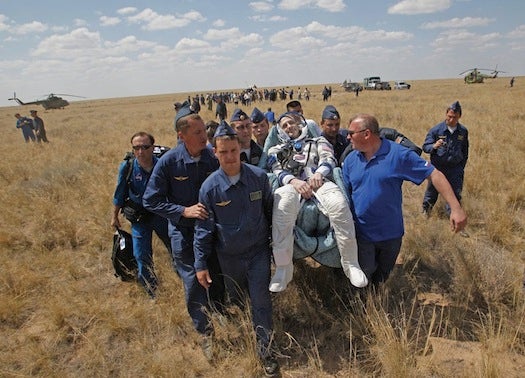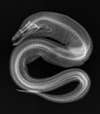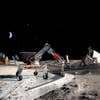It’s been a great year for science–Curiosity! The Higgs Boson!–and intrepid photographers have been there all along to document it. Narrowing our favorite photos down to just a dozen wasn’t easy, but here they are. Until next year, everybody.
Click to enter the gallery.
Readjusting To Earth
U.S. astronaut Don Pettit spent 191 days on the International Space Station, orbiting the Earth 3,088 times before landing in July. As Pettit was carried off after the landing, photographer Mikhail Metzel caught this surprisingly serene photo.
Ants Up Close
This beautiful photo, zoomed in 2.5 times, didn’t win Nikon’s Small World Competition–the company’s challenge to create up-close art–but it was still our favorite, and deserves a spot on our best-of-the-year list.
Multi-Exposure Fencing
We had to include something from the London Olympics, and this multi-exposure fencing photo of South Korea’s Choi Byungchul (right) facing off with Egypt’s Alaaeldin Abouelkassem won us over. It captured the pace and artistry of fencing, and the Olympic Games in general, better than just about anything else.
Turning People Into Plastic
Through a process called plastination, human bodies are turned into decomposition-free models. Water and fat molecules are replaced with polymers and–_voila_–in eight to 12 months you have a human ready for display. This photo, taken at Dalian Hoffen Bio-Technique Company in northern China, makes our list for being a rare look into an eerie (but artistic!) process.
NASA As Curiosity Lands
Engineers and scientists put years of effort into sending Mars rover Curiosity to the Red Planet, and this photo, taken at NASA headquarters just after it touched down, perfectly captured their relief and excitement.
Cube Kite
We saw this photo all the way back in January, but it hasn’t gotten any less surreal. Ivan Morison and Sash Reading created the kite–yes, kite–from 3-D printed connectors and aerospace fabric.
Explosion On The Sun
This coronal mass-ejection–an eruption of million-degree electrified gas–sent more than 1 billion tons of plasma hurtling toward Earth at 3 million mph. Eep. And if that filament looks big here, just remember: it’s 200,000 miles long. See a video here.
Viper Moray
Morays are strange-looking animals already, so stick one through an X-ray and you’re bound to get something even stranger. An exhibit at the National Museum of Natural History in D.C. called X-Ray Vision: Fish Inside Out took shots of this viper moray, along with plenty of other sea creatures. The exhibit’s over in D.C., but we’ll always have the memories.
Moon-Printed Houses
3-D printing houses! On the moon! It’s one of the most futuristic ideas we’ve heard of–which also means we might have to wait a while before it’s a reality. But in February, professors at USC gave us this mock-up to keep our dreams alive.
Underwater Slug
We had to include one photo from photographer Alexander Semenov, who shoots creatures from the White Sea, northwest of Russia. We chose this colorful underwater slug, but they’re all breathtaking.
Dewey Damselfly
We also fell in love with Ondrej Pakan’s dew-covered insects, and decided to add this damselfly to our favorite shots from this year. But really, we could’ve added any the shots. See more of Pakan’s photos here.
ATLAS Magnets
This list wouldn’t be complete without a photo showing the hunt for the Higgs Boson, but even after (almost definitely) finding it, the particle itself is a little, uh, evasive. So we’ve including the giant, superconducting magnets from ATLAS, one of the particle detector experiments at CERN.












